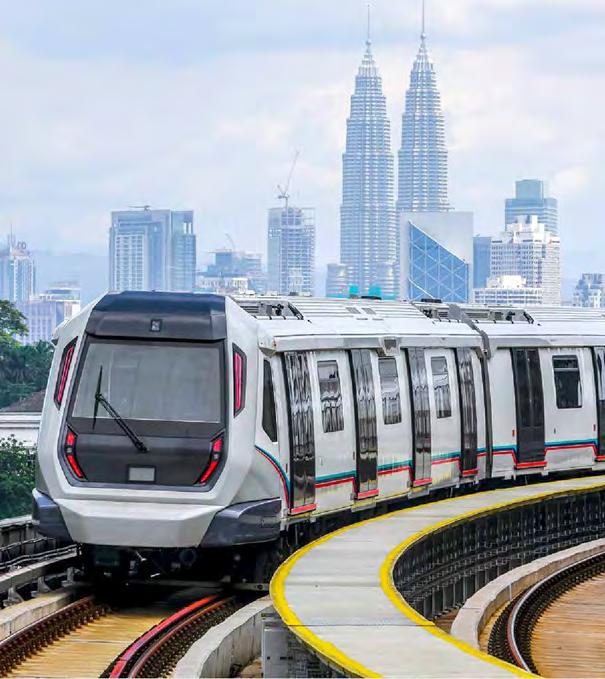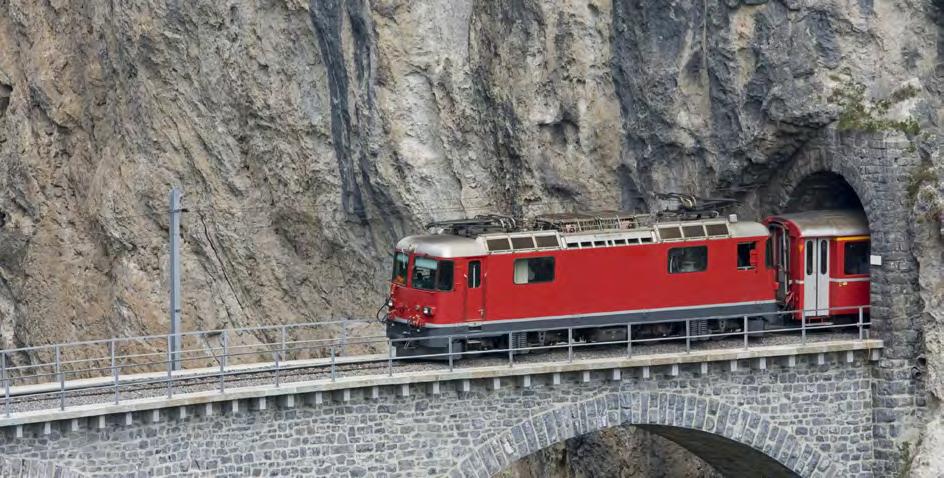
4 minute read
REPORT
THE TEAM OF KPMG INTERNATIONAL
SHARE THEIR VALUABLE INSIGHTS ON THE FUTURE OF PUBLIC TRANSPORT…
his sector will continue to ex-
Tperience an increasing amount of disruption over the next five years. Forward-looking players can ride this wave successfully, given that they act now. Public transport organizations should take the time to pause, reflect and map out a new future of enhanced customer experiences and integrated services, along with decarbonized and digitalized operations, while securing stable finances.
KPMG International, in a commissioned survey conducted by Forrester Consulting, engaged 483 leaders from public transportation organizations across the globe to understand their perspectives on the sector’s future. Participants included public transport ministries and authorities, operators and outsourced vendors.
In this report, we explore the potential that a connected public transport enterprise has in forging robust enterprise-wide business and delivery models that can drive excellent customer experience while enhancing efficiency and contributing to the prosperous future we all want to see. The report documents current industry trends, presents compelling hypotheses on the sector’s future and charts the way forward to support this journey.
The Traditional Model Of Public Transport Service Delivery Is Being Challenged As Never Before… Public transport has traditionally been provided by heavily subsidized publicsector bodies operating discrete/siloed transportation modes. This approach made sense from an asset-management perspective, but it led to journey options for citizens when timetables, ticketing and customer service were not always aligned to expedite travel across various transit systems. Additionally, agencies typically took a monopoly mindset to protect revenue and market share.
New market entrants are changing the last-mile equation through enhanced services and convenient new offerings. Additonally, disruptive transport technologies are on the horizon. Frictionless service interactions in other sectors have raised customer expectations of public transport. Joined-up services, seamless payments and enhanced customer experiences are the way forward for mature transport systems.
Priorities are shifting as decisionmakers listen to the voice of their constituents and look beyond the operation of transport infrastructure, fleets and workforce to fully consider the advantages of a connected, 21st-century ecosystem. The signals of change are powerful and unmistakable.
Firstly, evolving customer and community expectations for connected, personalized services will require organizations to be even more responsive. Secondly, public transport can be a crucial enabler of sustainable economic growth and equitable access to opportunity. New public transport modes, entrants and enabling technologies such as autonomous vehicles, air taxis and hyperloops are poised to change how services are delivered. Additionally, Mobility-as-aService and autonomous vehicles have the potential to be cost-competitive with public transport services and more convenient in servicing the last mile of customer journeys. Lastly, the pace of
PRIORITIES ARE SHIFTING AS
DECISION-MAKERS LISTEN
TO THE VOICE OF THEIR
CONSTITUENTS AND LOOK
BEYOND THE OPERATION OF
TRANSPORT INFRASTRUCTURE. innovation is accelerating and exceeding the rate at which regulatory systems can adapt. Regulation will need to be dynamic amidst ongoing innovation.
In addition to these signals, the profound impact of the global pandemic has reshaped workforces, lifestyles and reliance on public transportation systems. Demand for services may evolve as many citizens embrace hybrid work models or replace urban lifestyles with more-affordable suburban settings. But KPMG believes that vibrant cities will remain relevant and prosper, and transport systems will evolve to serve citizens, drive equity and meet net-zero targets.
The Future Of Public Transport Is Here… Public transport agencies must become more innovative and more agile. They should focus on the essential core of public transport operations to evolve networks, service patterns, fare policy, investment strategy and asset custodianship. In their role as market stewards, agencies should direct modern ecosystems in partnership with the private sector to meet cost pressures, public expectations and environmental goals. Agencies should position themselves to meet these challenges by: Considering if their operating model enables multi-modal planning; redefining their role as commissioner of markets within new regulatory frameworks; deploying policy and behavioural change initiatives to meet net-zero targets; implementing new funding models and revenue sources to help ensure financial sustainability; and, understanding how planned investments can drive social and economic opportunity.
As change unfolds and the pace of change accelerates, we present seven thoughtprovoking predictions on the future of public transport: 1. The political influence over public transport is expected to grow as it is increasingly seen as a lever to drive social and economic opportunity. 2. The agencies will likely become the commissioner of markets rather than the deliverer of services. The future transport algorithms will likely nudge customers through the network, balancing individual preferences with network and social requirements. 3. Decarbonization of transport operations will likely become a strategic business priority.
Public transport is expected to be accessible for some citizens and communities and funded in innovative new ways. Agencies will also likely require more inhouse technology and digital transformation. Automation will likely result in a reskilled and redeployed workforce. Lastly, outcome and riskbased regulation are expected to be needed to embed flexibility.

2040: A Look Into The Future Of Services
Electrified network to help meet net-zero targets:
Aiming to reduce air and noise pollution with ubiquitous electric vehicles (EVs) can create healthier communities.
Mobility-as-a-Service (MaaS) solutions: Single customer interface to enable easy-to-understand journeys in a broad market of transport services
Algorithms nudge customer choices: Movements can be dictated according to network needs and user preferences.
On-demand services: Localized services responding to customer needs — a transition from the traditional hub and spoke model to pointto-point services.
Autonomous services: Enabled by the Internet of Things, smart technologies and 5G connectivity
Integration of new and emerging modes: Last-mile offerings, hyperloops, e-helicopters, autonomous vehicles.
Outcome and risk-based regulation: To facilitate more outstanding market entry for new and emerging modes. The creation of innovative partnerships will likely drive the delivery of seamless services.
Mohammad AbuDalo










